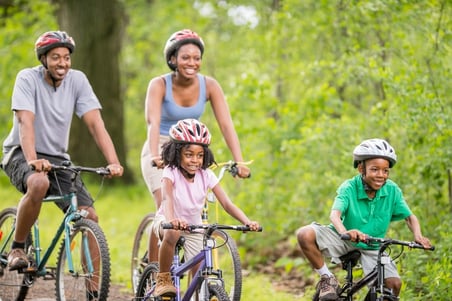 Running, skipping, hopping, bounding, throwing, and crawling are all activities children around the world enjoy and are necessities for proper movement development. Most sports and lifetime fitness activities require one or more of these basic motor skills. Developing basic motor skills sometimes is not our main priority when it comes to our children’s upbringing. In our lifetime, the focus on physical education has somewhat declined due to various reasons, with one reason being a deemphasis on playground time and even family-time physical activity. Beyond physical fitness, there are many other benefits that one can get from being more active, especially at a young age.
Running, skipping, hopping, bounding, throwing, and crawling are all activities children around the world enjoy and are necessities for proper movement development. Most sports and lifetime fitness activities require one or more of these basic motor skills. Developing basic motor skills sometimes is not our main priority when it comes to our children’s upbringing. In our lifetime, the focus on physical education has somewhat declined due to various reasons, with one reason being a deemphasis on playground time and even family-time physical activity. Beyond physical fitness, there are many other benefits that one can get from being more active, especially at a young age.
Many Kids Don’t Get Enough Activity
Not shocking, but definitely sobering, is the knowledge that only 1 in 3 children is physically active every day, 1 in 3 children is obese, and 70 percent of people become obese as adults. With an increase in our children’s electronics usage (phone, computer, television, and so on), things are starting to look quite concerning. Looking at this from a fitness professional’s point of view, I feel that health and wellness is the most important thing you have, making this issue the highest of priorities.
Accountability and Being a Role Model
How can we help our children overcome the unwanted effects of unhealthy living and gain all the benefits of fitness and wellness? Some of the responsibility is going to be on the shoulders of the adults in charge of the child. Being a good role model is not only good for the child, but also for the adult. Being conscious of what you are eating and how much exercise you are getting every day is a great start. There are many activity trackers and websites such as www.myfitnesspal.com that can help with accountability. You can even link to others in your family to see what they are doing and create a supportive network without even leaving the nest.
Finding the Right Sport or Activity
Not every child will gravitate toward a specific sport or activity, and it may take several tries to find what works for them. If team sports like soccer or basketball don’t work, try something that is more individual like swimming, wrestling, or tennis. If traditional sports are not the answer, look at other activities such as martial arts, rock climbing, or ballet. If economics is an obstacle, going to a park, tossing the ball around, and playing tag are all easy and inexpensive games for kids that promote exercise, motor skill development, and social interaction. Ultimately, having a role model who cares about their wellness can have a profound impact on the child’s image of fitness.
It's a Big Responsibility, but NIFS Can Help
Although that may sound like a huge responsibility, we owe it to our youth to prioritize fitness and wellness in an effort to slow the trends we are seeing around the globe. Check out your local parks and other options for fitness and reach out to fitness professionals, your child’s physical education teachers, and coaches for help.
NIFS can help too! Contact Monica Bopp at NIFS for more information about organizing a field trip for your school. Field trips at NIFS are fun and educational and cater to all ages. Keep your focus on what matters: our future.
This blog was written by Thomas Livengood, NIFS Health Fitness Instructor and Personal Trainer. To read more about the NIFS bloggers, click here.

